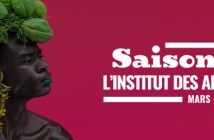Last January you took part in the Chobi Mela Photo V, a photo festival in Bangladesh: can you describe your experience there?
It was my first time in South East Asia and I was so fascinated by the vibrancy and fast pace of Dhaka where the festival took place. It actually reminded me of Lagos.
I was very impressed by the magnitude of this festival, and the quality of the works shown was of a high standard that served as a good inspiration for my photographic practice.
It was also a chance to meet and exchange ideas with great photographers who graced the event.
Interestingly, this festival was mainly put together by people from Bangladesh, in spite of the country’s various economic or developmental challenges. I also discovered their immense dedication and energy for photography in this country, which has translated into them producing world class photography from their own perspective.
It is really encouraging to see how they indigenously provided a platform for themselves to promote their photography across the world through organizations like the Drik Photography Library, Pathshala Photographic Institute and Majority Worlds Photo Agency.
The festival has continued to bring lasting inspiration and hope that we can make Nigeria and Africa photography reach the same heights.
On the festival website, in guise of an introduction, the organizers wrote that « Chobi Mela was conceived in a nation far-removed from the established capitals of photography. Bangladeshi photographers did not feature in the classical books on the medium. Images of Bangladesh seen worldwide were images produced largely by white western photographers. There had been no festival of photography in Asia. Several issues were being tackled. The ignorance about non-western photographic practice (this was true even within Bangladesh, where photographers knew about Ansel Adams and Edward Weston, but were unaware of important work being done in neighbouring countries); the non-recognition of photography as a valid profession and an art form; the limited options that Bangladeshi and regional photographers had to seeing photography ». Is this similar to the Nigerian context in which you live?
The situation is similar to Nigeria. It is shame that until now, many of the images that portray Africa have largely been made by non-Africans. As such, many Africans are mostly aware of non-African photographers. I think with determination, consistency and creative strategies, we can change this pattern and ensure that Africans become predominant in the images that portray the continent. There is also a need for collective effort on the part of African photographers and consumers of photography. I often feel concerned when Africans frequently hire photographers from the West to take photos of the continent when there are many good Nigerian photographers in the country. This is not helpful for the growth of Nigerian Africa photography.
Malian photographer Mamadou Konaté also had a show at the Chobi Mela, and Ricardo Rangel won the Chobi Mela 2009 award (after the South African photographer Peter Magubane in 2006). From here, one gets the impression that Bangladeshis have a real interest in what is happening in Africa and in African photographers; is that impression correct?
I think since we seem to belong to the world majorities (often called « the developing countries »), there is bound to be a common interest among us.
And I think this mutual interest could provide platforms where photographers from both regions can exchange ideas and experiences, bringing collective development to photography.
You exhibited « Living Queer Africans » there, a piece you realized as a slide-show in Paris in 2007, on an African young man living his homosexuality with difficulty. How were your images received by the local public?
It is difficult to know how the local audience reacted to it, as homosexuality is a highly taboo topic; it may have been perceived as very provocative. None of the locals asked any question at the screening, but after this event, a group of Bangladeshi gays met me for a talk about their life being gay and how frustrating it is for them to live a hidden identity. They said that they were touched by the work and they felt inspired for me to take pictures and create stories as a way of expressing their frustration and their true identity. And I am thinking of returning if I get the necessary support.
You decided to continue this work in Nigeria when you left Paris. Two years on, what has become of this original idea?
I did try on my return, but the situation is very difficult as homophobia is very widespread in Nigerian society, but I am still determined to progress with the work in a conceptual manner if possible.
You also work on street football, evangelical movements… What are you main photographic interests?
Well, I am drawn to social and cultural issue a lot. I am always keen on images that depict daily life and the social issues facing us, in the hope that photographs can serve to appreciate our existence and also as a means of intervening in the various social and cultural challenges of our modern society.
Andrew Esiebo’s series of work on Afriphoto:
Soccer world: http://www.afriphoto.com/index.asp?navig=expo&no=71
Life goes on in Lagos: http://www.afriphoto.com/index.asp?navig=expo&no=49///Article N° : 8663















